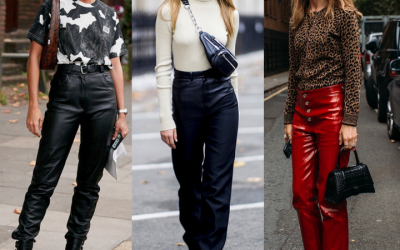Sustainable clothing is becoming increasingly popular, but it can still be difficult to find affordable options.
Why is that? Is sustainable fashion really that much more expensive to produce? The answer is not simple, but there are a few factors at play. In this blog post, we will discuss the reasons why sustainable clothes tend to be more expensive, and we will offer some tips for finding affordable sustainable fashion!
Are Sustainable Clothes Expensive or Do We Expect Too Much?
In large part, the concept of price in the fashion industry has been warped by exploitative manufacturing practices.
These manufacturing practices have led to lower prices in the industry through optimized supply chains and outsourced labor. But, it’s our appetites as consumers that have ultimately dictated how valuable those decisions are for manufacturers.
With every price drop, consumers’ expectations shift to even lower prices. That places manufacturers and designers in a tough spot where they can either lower prices or lose out to others who will.
The unfortunate reality is that—to resolve the tension between customer and shareholder expectations—most brands will almost always choose to make their products less sustainable rather than suffer any impact on their bottom line.
Sustainable production does not mean mass production. In fact, sustainable fashion often relies on small-batch manufacturing methods.
This means that the clothes are made with more care and attention to detail, which leads to higher costs. Moreover, sustainable fabrics tend to be more expensive than traditional fabrics.
Increasing demand coupled with dwindling supply sources means upward pressure on prices. And with many brands trying to create timeless and high-quality products, it’s almost impossible to compete on price.
Labor And Supply Chain Management is More Expensive For Ethical Brands
Labour and supply chain management is also a factor in the high cost of sustainable fashion. Many sustainable brands operate with Fair Trade and/or ethical labor standards, which often results in higher production costs.
We’re going to dig a little deeper into those standards further down.
Additionally, many sustainable fashion companies are working to eliminate waste from their supply chains, which can be difficult and costly.
Paying fair wages is not just about increasing a paycheck. Rather, it’s ancillary benefits, like maternity leave and healthcare, that make the biggest impact on labor costs.
When these benefits are factored in, the cost of ethical production is actually lower than that of fast fashion.
Sustainability also requires a different way of managing supply chains. In order to ensure that fabrics and materials are ethically sourced and environmentally friendly, brands have to carefully monitor their suppliers.
This extra layer of oversight is yet another expense that a typical fast-fashion brand doesn’t need to contend with.
Economies of Scale – Who is Buying Sustainable Fashion?
Another key factor that keeps fast-fashion prices low is simply the scale of sales and manufacture.
Traditional fashion brands keep their price very low by producing massive quantities – even when there are no markets immediately available.
It’s simple math:
If product numbers increase from 10,000 to 100,000, fixed costs are distributed throughout all units. That means equipment and rental costs can be defrayed as much as a company can manage to scale its sales.
Furthermore, traditional fashion brands can refine manufacturing processes at scale in ways that sustainable fashion brands don’t have access to.
The larger scales of the manufacturing refine the process and make this from the traditional hand-made process performed by an expert to a factory where the workers perform fewer pieces—like back pockets—thousands of times decrease costly inefficiencies.
In that kind of scenario, workers require less training and therefore command lower wages, further contributing to the low costs of mass-produced garments.
In addition, having access to the kind of quantities that fast-fashion brands move comes with much more leeway to dictate the price of raw materials from suppliers. Cheaper raw materials directly impact the price of the clothing.
Marketing and Retail Overhead
Another massive advantage that fast-fashion brands have over sustainable ones is access to a large audience. Advertising on the scale that fashion brands need is prohibitively expensive and excludes most small-to-mid-sized sustainable brands.
Sustainable brands, on the other hand, have to cover all of their marketing and advertising costs from a much smaller customer base. They also generally don’t have the deep pockets of big conglomerates and therefore tend not to be able to afford huge discounts in order to get their products onto store shelves.
Certifications and Transparency For Sustainable Clothes
Another reason sustainable clothes can be more expensive is that the materials and processes used to make them are often more expensive. Organic cotton, for example, costs more than conventionally grown cotton because it’s produced without harmful chemicals and pesticides. Sustainable fabrics such as Tencel® or Modal®, made from sustainably harvested wood pulp, are much more expensive than their non-sustainable counterparts.
There’s also the paperwork and documentation involved to prove that a sustainable fashion brand is adhering to its stated values.
The Global Organic Textile Standard (GOTS), for example, is an internationally recognized certification that guarantees a product has been made using sustainable materials and practices from start to finish. To receive this certification, manufacturers must provide extensive documentation on everything from their sourcing policies to the environmental impact of their production processes.
All of these extra costs add up, making sustainable clothes an order of magnitude more expensive almost by necessity.
Shopping Sustainably
Shopping sustainably does not require replacing your wardrobe completely with reusable alternatives. And there’s certainly room to pick your battles.
When it comes to sustainable shopping, start by looking for natural materials like cotton and wool instead of synthetic fabrics.
You can also look for clothes with low environmental impacts, such as those made from organic cotton or recycled materials. And if you’re really serious about sustainability, seek out certified fair trade products.
These measures might seem small, but they can make a big difference over time. With just a little effort, you can help reduce the environmental impact of the clothing industry while still enjoying stylish and comfortable garments.
Conclusion
The high price tags associated with sustainable fashion are often enough to scare people away from making the switch. But what many don’t realize is that the cost of sustainable clothing goes beyond the initial purchase price.
Ultimately, if you can shift your mindset from thinking of your clothing as a purchase and think of it in terms of a long-term investment, you’ll slowly start to change your mind about what’s a reasonable price to expect for high-quality sustainable clothing.




